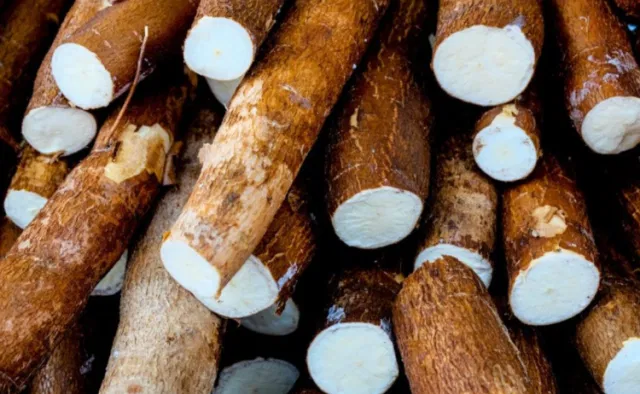Imagine a common food, a global staple, consumed by nearly half a billion people every single year… that also holds a hidden, serious secret. It’s not some exotic, rare delicacy. It’s a humble root vegetable, and it’s responsible for hundreds of concerning health incidents annually.
What is this paradoxically popular plant, and why is it both a lifesaver and a potential hazard? Get ready to rethink your knowledge of everyday edibles!
The Everyday Enigma: What’s the Secret of This Widely Eaten Food?
We’re talking about Cassava. This unassuming plant is a dietary backbone for millions, with billions of pounds produced worldwide each year. Originating in South America, it’s celebrated for its versatility and ability to provide vital nourishment.

Here’s the twist: the plant’s stems, peel, and leaves naturally contain compounds that can become quite problematic if consumed raw. It’s a built-in defense mechanism that protects the plant from various external threats.
According to global health insights, instances of severe illness linked to improper consumption occur hundreds of times a year. This is why it’s often discussed with such caution – a true “risky root.”
The Science Behind the Safeguard: Why Preparation is EVERYTHING!
Global health authorities explain that cassava tubers contain varying amounts of natural compounds. These compounds are essentially the plant’s shield against animals and insects.
The good news? Proper processing before consumption can dramatically reduce these components! This is the key to making cassava safe and beneficial.

Challenges often arise during times of extreme hardship, when traditional, thorough preparation methods might be skipped due to urgency. When high-potency cassava isn’t handled correctly, it can lead to acute bodily reactions. In severe, long-term cases, it’s also associated with specific health conditions impacting mobility. These issues are often seen in contexts of significant resource scarcity.
Millions Eat It Safely: The Art of Transformation
Despite its inherent properties, countless individuals consume cassava every day without issue. Why? Because the knowledge of safe preparation has been passed down through generations.
The secret lies in the ‘prep’. A significant part of making cassava safe involves careful steps, which can include extensive soaking – sometimes for up to 24 hours – followed by thorough cooking. This diligent process is what transforms a potentially challenging plant into a wholesome, energy-rich food source.

Reports have even highlighted extreme situations, such as in Venezuela, where people faced acute health challenges when forced to consume insufficiently processed cassava during periods of scarcity.
Cassava stands as a powerful testament to both nature’s complexities and human ingenuity in adapting and transforming potentially challenging resources into vital sustenance. It’s a reminder that sometimes, the most common foods hold the most surprising stories!


